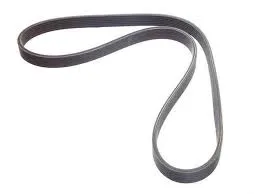- Arabic
- French
- Russian
- Spanish
- Portuguese
- Turkish
- Armenian
- English
- Albanian
- Amharic
- Azerbaijani
- Basque
- Belarusian
- Bengali
- Bosnian
- Bulgarian
- Catalan
- Cebuano
- Corsican
- Croatian
- Czech
- Danish
- Dutch
- Afrikaans
- Esperanto
- Estonian
- Finnish
- Frisian
- Galician
- Georgian
- German
- Greek
- Gujarati
- Haitian Creole
- hausa
- hawaiian
- Hebrew
- Hindi
- Miao
- Hungarian
- Icelandic
- igbo
- Indonesian
- irish
- Italian
- Japanese
- Javanese
- Kannada
- kazakh
- Khmer
- Rwandese
- Korean
- Kurdish
- Kyrgyz
- Lao
- Latin
- Latvian
- Lithuanian
- Luxembourgish
- Macedonian
- Malgashi
- Malay
- Malayalam
- Maltese
- Maori
- Marathi
- Mongolian
- Myanmar
- Nepali
- Norwegian
- Norwegian
- Occitan
- Pashto
- Persian
- Polish
- Punjabi
- Romanian
- Samoan
- Scottish Gaelic
- Serbian
- Sesotho
- Shona
- Sindhi
- Sinhala
- Slovak
- Slovenian
- Somali
- Sundanese
- Swahili
- Swedish
- Tagalog
- Tajik
- Tamil
- Tatar
- Telugu
- Thai
- Turkmen
- Ukrainian
- Urdu
- Uighur
- Uzbek
- Vietnamese
- Welsh
- Bantu
- Yiddish
- Yoruba
- Zulu
Сен . 23, 2024 05:14 Back to list
the timing belt
Understanding the Timing Belt A Crucial Component for Your Engine's Performance
The timing belt is an essential component of an internal combustion engine, playing a crucial role in synchronizing the engine's operations. It is a rubber belt with teeth that connects the crankshaft to the camshaft, ensuring that the engine's valves open and close at the proper intervals in relation to the pistons' movements. This synchronization is vital for the engine to function smoothly and efficiently, making the timing belt a key player in the overall performance of a vehicle.
One of the primary reasons the timing belt is so important is that it helps maintain the precise timing necessary for optimal engine performance. If the timing belt fails or is not replaced at the recommended intervals, it can lead to severe engine damage. The most common consequence of a failed timing belt is a catastrophic engine failure, often resulting in bent valves, damaged pistons, and potentially, a complete engine rebuild.
Most manufacturers recommend replacing the timing belt every 60,000 to 100,000 miles, depending on the specific vehicle and engine type
. Regular maintenance and timely replacement can prevent costly repairs and extend the life of the engine. It’s crucial for vehicle owners to refer to their owner’s manual for the manufacturer's recommendations regarding timing belt service intervals.the timing belt

When changing a timing belt, it is not only necessary to replace the belt itself but also to consider other related components. Water pumps, tensioners, and idler pulleys are often recommended to be replaced simultaneously. This is because a failing water pump can lead to overheating, and a worn tensioner or idler pulley may compromise the new timing belt's performance. Performing these replacements together can save time and money in the long run.
Identifying signs that the timing belt might need attention is essential for vehicle owners. Typical indicators include a ticking noise coming from the engine, difficulty starting the vehicle, or a noticeable decrease in engine performance. If a vehicle exhibits any of these symptoms, it is wise to have it inspected by a qualified mechanic as soon as possible.
In addition to mechanical failure, the environment can also contribute to the timing belt's deterioration. Exposure to high temperatures, oil leaks, and debris can all accelerate wear and tear. Therefore, maintaining your vehicle and keeping the engine clean and free from leaks can significantly help prolong the life of the timing belt.
In conclusion, the timing belt is a critical component that significantly impacts engine performance and reliability. Regular maintenance, timely replacements, and being aware of potential warning signs can help ensure that the timing belt continues to do its job effectively. Vehicle owners should take the necessary precautions to avoid costly repairs and keep their engines running smoothly by respecting the timing belt's essential role in internal combustion engines.
-
Korean Auto Parts Timing Belt 24312-37500 For Hyundai/Kia
NewsMar.07,2025
-
7PK2300 90916-T2024 RIBBED BELT POLY V BELT PK BELT
NewsMar.07,2025
-
Chinese Auto Belt Factory 310-2M-22 For BMW/Mercedes-Benz
NewsMar.07,2025
-
Chinese Auto Belt Factory 310-2M-22 For BMW/Mercedes-Benz
NewsMar.07,2025
-
90916-02660 PK Belt 6PK1680 For Toyota
NewsMar.07,2025
-
drive belt serpentine belt
NewsMar.07,2025

